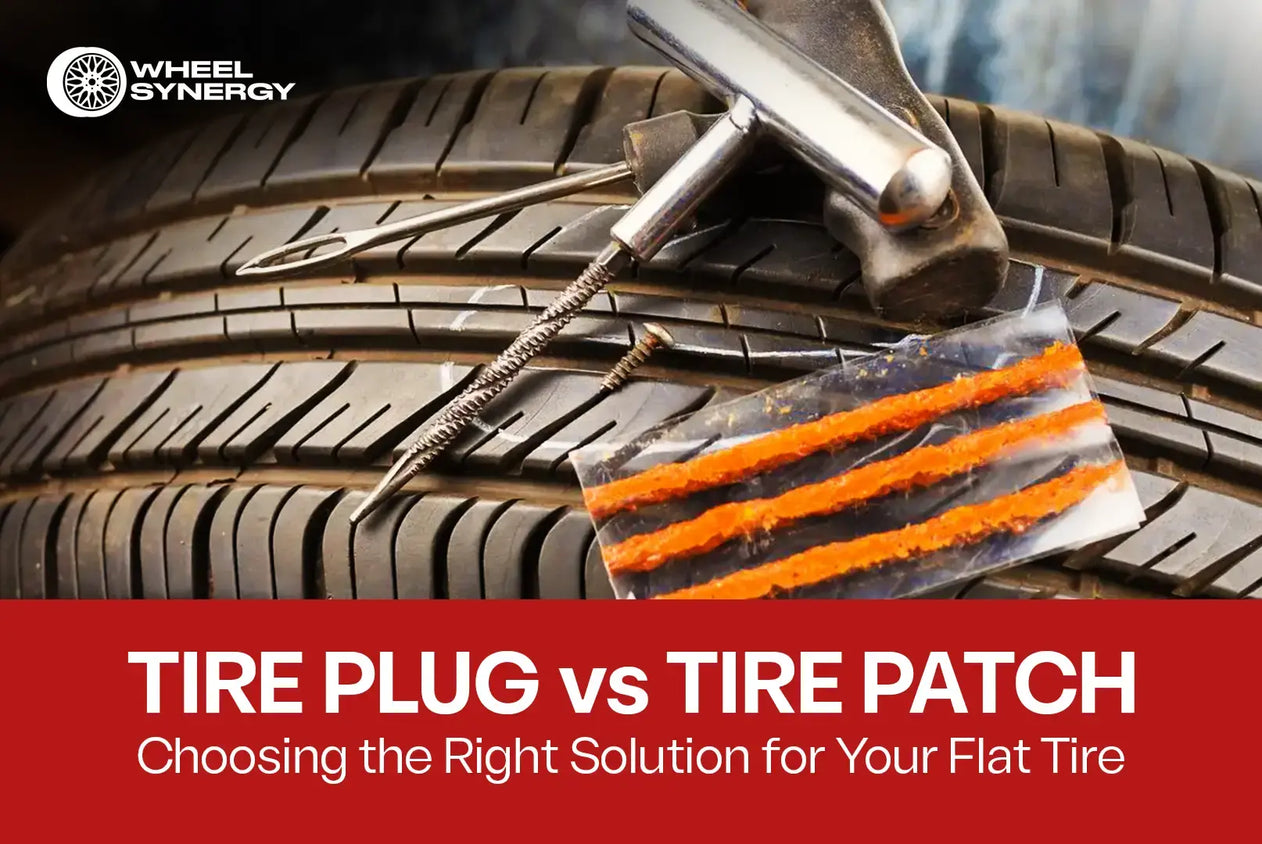Your cart is empty.




MON - FRI: 9:00AM - 5:30PM (EST)
SAT: 9:00AM - 3:00PM (EST)

Dealing with a flat tire can be a frustrating experience, but the good news is that there are effective solutions available to get you back on the road. When it comes to repairing a flat tire, two common options are tire plugs and tire patches. In this blog post, we will explore the differences between tire plugs and tire patches, their pros, and cons, and help you make an informed decision on which solution is best for your flat tire situation.
Tire plugs are a popular choice for minor punctures caused by nails, screws, or other sharp objects. They are typically made of a combination of rubber and adhesive material.
Here are some key points to consider about tire plugs:
Tire patches are considered a more robust and long-lasting solution for repairing flat tires. They involve placing a rubber patch over the inside of the tire, covering the puncture. Consider the following aspects of tire patches:
As a general guideline:
When faced with a flat tire, understanding the differences between tire plugs and tire patches is crucial for making the right repair decision. While tire plugs provide a quick and temporary fix for small punctures, tire patches offer a more reliable and permanent solution for a wider range of tire damage. It's essential to consider the severity and location of the puncture, as well as consult a tire professional, such as those at Wheel Synergy, for expert advice and assistance. They can assess the condition of your tire and guide you towards the best solution to get you back on the road safely and efficiently.
The most effective method for repairing a flat tire is to replace it with a spare tire. This approach ensures safety and reliability, allowing you to continue your journey with peace of mind. However, if a spare tire is not available or you are unable to change the tire yourself, an alternative option is to use a tire repair kit. These kits typically include a plug and a reamer tool that can be utilized to patch small punctures in the tire. It's important to note, though, that this solution may not be as reliable and may not be suitable for larger punctures or damage to the sidewall of the tire.
A flat tire can result from various causes, including punctures, leaks, and blowouts. Punctures are commonly caused by encountering sharp objects like nails or screws on the road. Leaks can be attributed to damage to the valve stem or corrosion of the wheel rim. Blowouts may occur due to factors such as overinflation, underinflation, or tire damage.
The time it takes to patch a tire can vary depending on several factors, including the extent of the damage, the expertise of the person performing the repair, and the equipment available. On average, a professional tire repair technician can patch a tire within 15 to 30 minutes. However, this timeframe is an estimate and can be longer if the damage is extensive or if there are complications during the repair process.